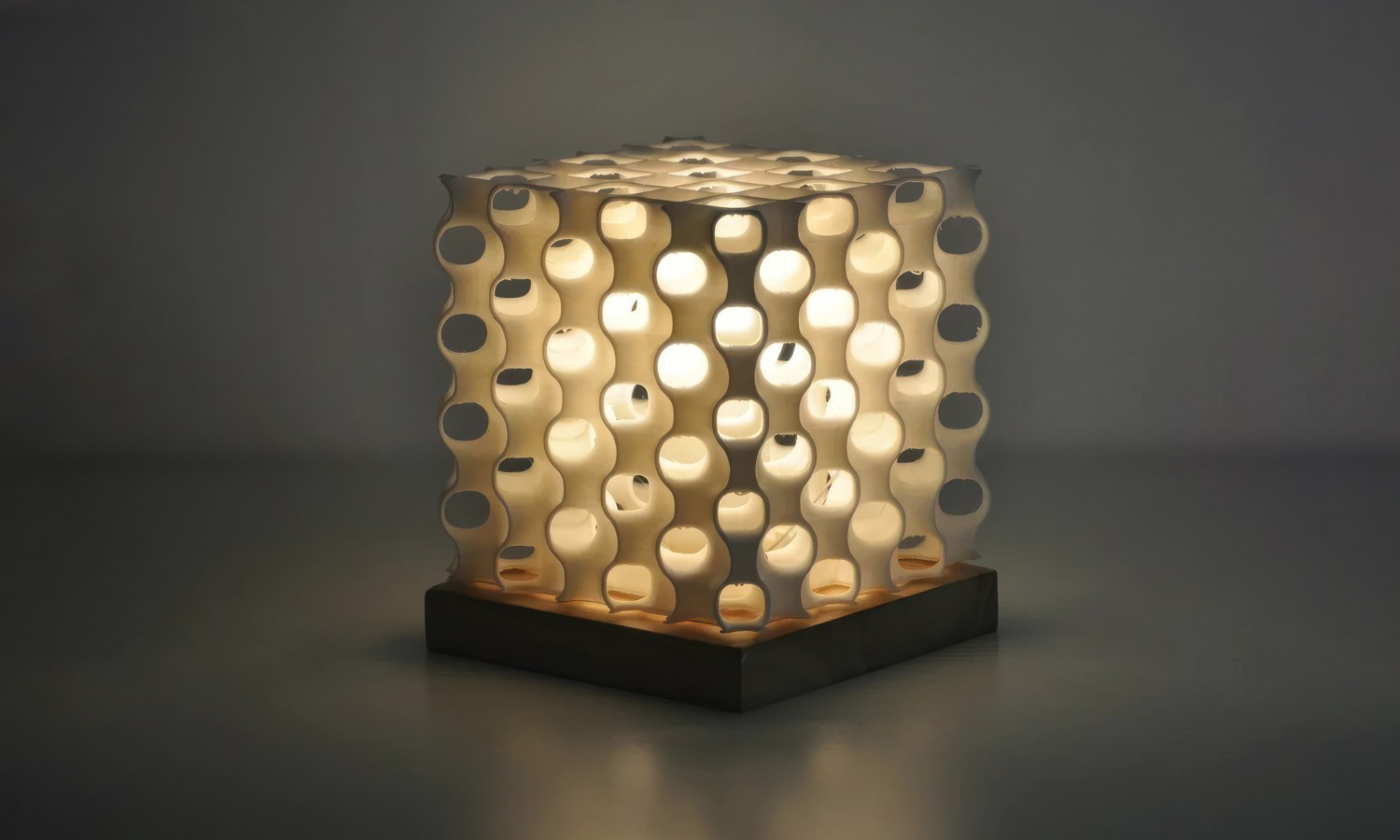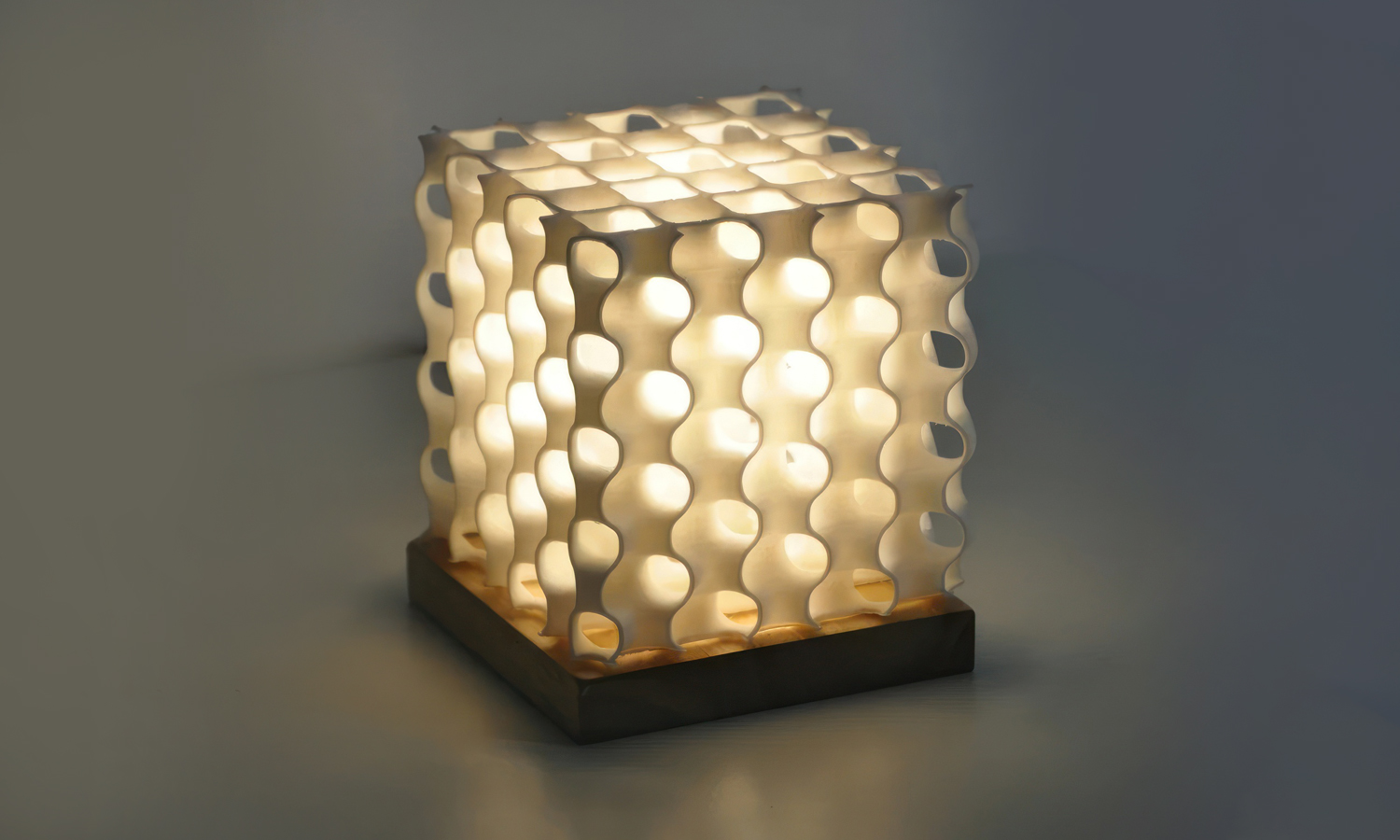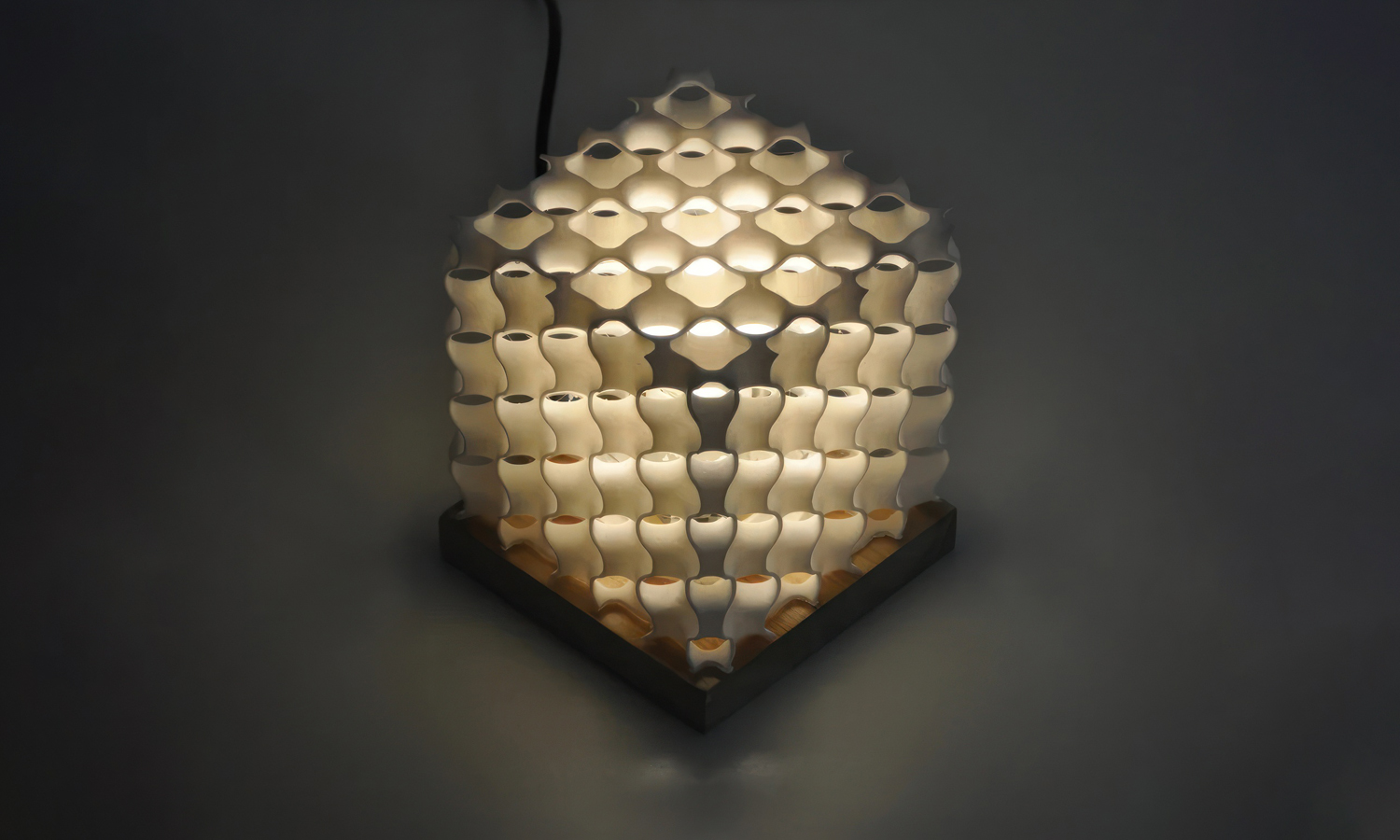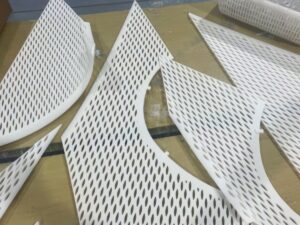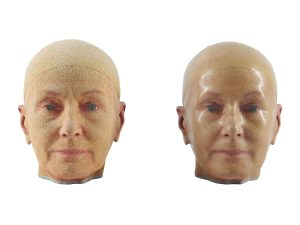- SLA 3D Printed Mirror-Polished Resin Abstract Sculpture
- Enhance Ricoh GR3 with Custom 3D Printed Accessories
Gallery
About Project
This stunning cubic lamp showcases the beauty of parametric design-a rhythmic wave-like structure flowing seamlessly across its surface. The geometric pattern is not just decorative; it plays a key role in diffusing the light within, casting soft, organic shadows that enrich the surrounding space.
The lampshade was 3D printed using SLS (Selective Laser Sintering) technology with white nylon (PA11), a material known for its strength, heat resistance, and smooth matte texture. The precision of SLS allows for complex interwoven forms without the need for supports, making it ideal for realizing intricate parametric structures like this.
Thanks to the lightweight yet durable nature of nylon, the design is both aesthetic and functional, withstanding daily use while maintaining its form. The lamp’s base is made of wood, adding a natural warmth that contrasts beautifully with the digitally crafted nylon shade.
Why 3D printing?
Traditional manufacturing can’t easily replicate such complex lattice forms, especially with consistent detail and uniform diffusion. With SLS printing, this design went directly from digital model to physical object-without molds, without compromises.
At FacFox, we specialize in turning innovative ideas into high-quality products using professional 3D printing technologies like SLS, SLA, FDM, and PolyJet. Whether you’re designing lighting, furniture components, or artistic installations, we offer a wide range of engineering and aesthetic materials to suit your creative vision.
Need functional yet beautiful parts? FacFox is your reliable partner in 3D printing.
Solution
- Step 1: Design Modeling. The parametric lamp structure was digitally modeled using computational design software. Parametric algorithms were applied to generate the repetitive wave-like geometry across all faces of the cube.
- Step 2: File Preparation. The 3D model was exported as an STL file and imported into slicing software compatible with SLS machines. The orientation and packing were optimized to minimize powder usage and ensure structural integrity during sintering.
- Step 3: SLS 3D Printing. The lamp shade was printed using the Selective Laser Sintering (SLS) process. A high-powered laser was used to selectively fuse layers of white nylon powder (PA11) inside the printer’s build chamber. Layer by layer, the full lattice structure was formed without the need for support materials.
- Step 4: Cooling and Depowdering. After printing, the entire build chamber was allowed to cool naturally to avoid warping. Once cooled, the lamp was removed from the powder bed and excess powder was cleaned off using compressed air and a brushing process.
- Step 5: Surface Finishing. The printed lamp was lightly polished to remove fine powder residue. No additional painting or coating was applied to preserve the natural matte texture of the white nylon.
- Step 6: Assembly. A warm LED light source was installed inside the shade, and the completed piece was mounted on a custom-made wooden base to complement the nylon structure.
